Eggs may be one of the most humble ingredients in your kitchen, but they’re also among the most deceptively tricky to master. Scrambled, poached, fried, boiled, or baked—however you prefer your morning staple, chances are you’ve made a few missteps along the way. And while you might not notice every time, these subtle cooking blunders can mean the difference between a silky scramble and a rubbery flop, a creamy yolk and a chalky disappointment.
What makes eggs so tricky is their sensitivity. They cook fast, react strongly to temperature shifts, and refuse to be rushed or ignored. One second too long on the burner, one dash of seasoning too late, and your picture-perfect breakfast suddenly becomes a culinary letdown. Even seasoned home cooks often overlook the little details—like using cold eggs straight from the fridge or cracking them on the side of a bowl—that quietly sabotage results.
You don’t have to be a gourmet chef to cook great eggs, but a few smart adjustments can instantly level up your technique. Whether you’re someone who loves a weekend brunch or just wants to stop peeling stubborn hard-boiled shells, understanding what not to do is half the battle.
In this guide, we’re breaking down 12 of the most common egg-cooking mistakes that sneak into everyday routines. Some are obvious, others are surprisingly subtle—but all are fixable. So before you grab another carton or fire up the stovetop, take a few minutes to brush up on these egg essentials. Your breakfasts (and brunch guests) will thank you.
1. Starting with a Cold Pan
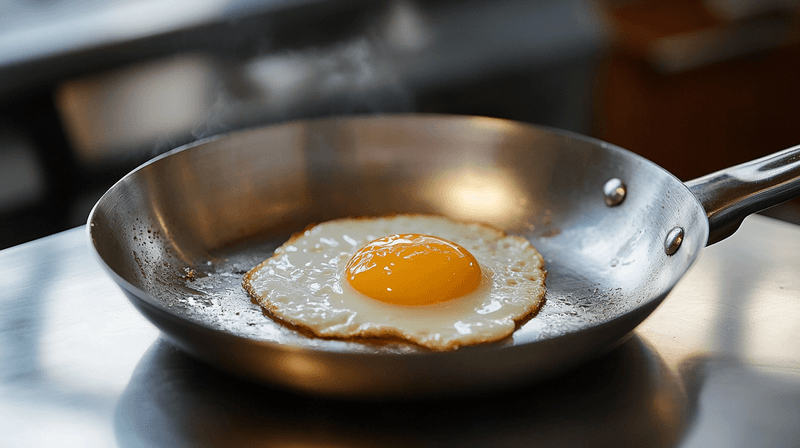
Ever wonder why your eggs stick like superglue? A cold pan is likely the culprit. When eggs hit an unheated surface, proteins immediately bond with the metal instead of setting up properly.
Always preheat your pan for 1-2 minutes before adding butter or oil. Then wait another 30 seconds before the eggs go in. You’ll notice the difference immediately – eggs that slide around instead of clinging desperately to the surface.
This simple step creates that magical non-stick effect that makes flipping and serving so much easier.
2. Using the Wrong Pan
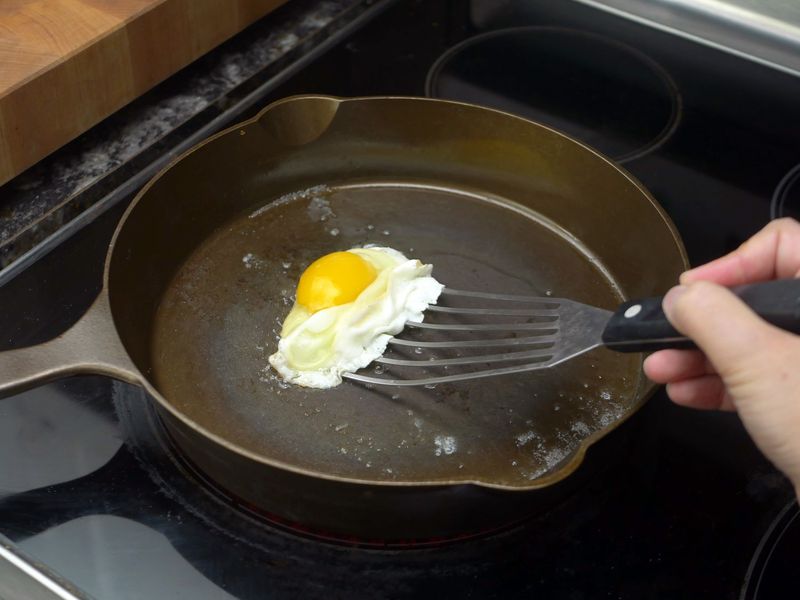
Grabbing any old pan from your cabinet might be sabotaging your egg game. That giant stockpot? Terrible for omelets. The scratched-up non-stick? A shell fragment disaster waiting to happen.
For scrambling and frying, a 8-10 inch non-stick skillet gives you the perfect surface area. Poaching works best in a shallow, wide pan that lets you easily monitor the eggs. Cast iron makes fantastic fried eggs but needs proper seasoning first.
Investing in one good egg pan will transform your breakfast routine more than any fancy technique ever could.
3. Cranking Up the Heat
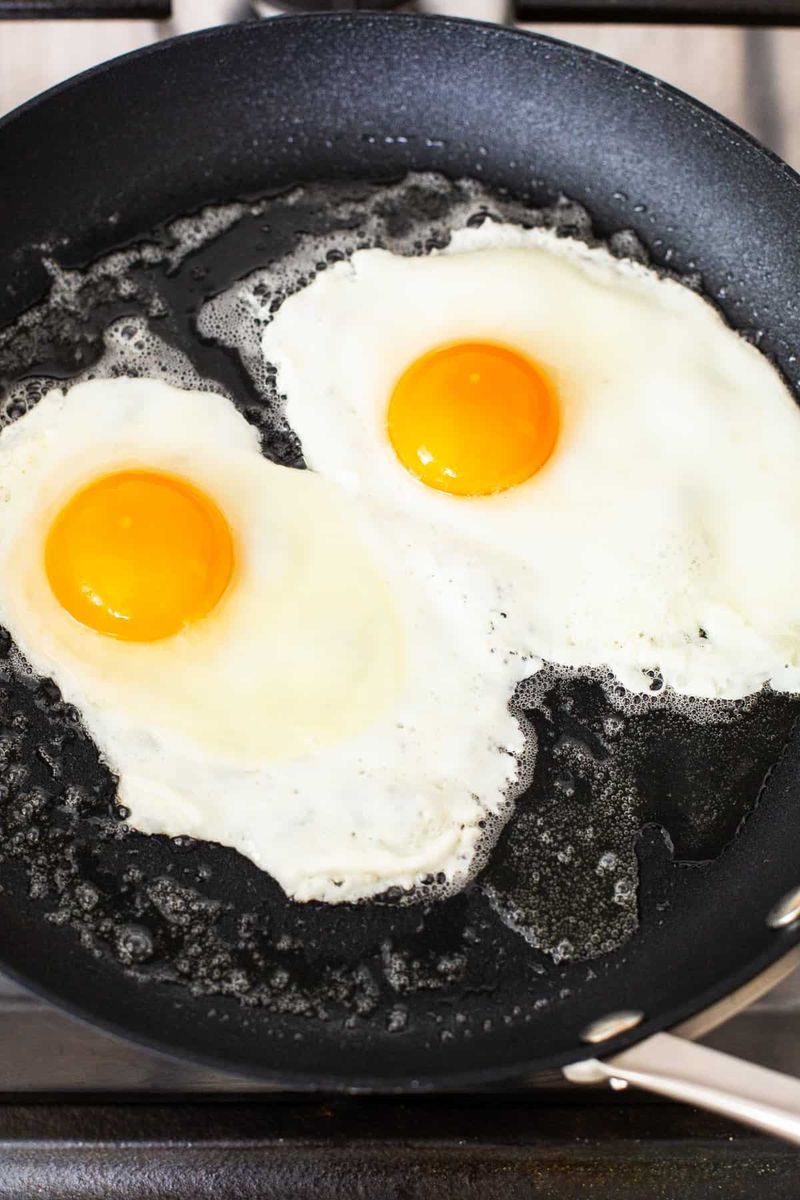
Sizzling hot pans might work for steak, but they’re egg destroyers! High heat quickly transforms proteins from tender to tough, giving you rubbery whites and chalky yolks faster than you can say “breakfast.”
Medium-low heat is the egg’s best friend. Patient cooking allows proteins to coagulate gently, creating that dreamy creamy texture everyone loves. You’ll know your heat is right when butter foams but doesn’t brown before adding eggs.
Remember: eggs cook surprisingly quickly even at lower temperatures, so stay vigilant and you’ll be rewarded with perfectly tender results.
4. Cooking Eggs Too Long

The perfect moment to remove eggs from heat isn’t when they look done – it’s just before! Residual heat continues cooking eggs even after they leave the pan, a phenomenon chefs call carryover cooking.
For scrambled eggs, pull them when they still look slightly wet but not runny. Fried eggs should have barely set whites if you want runny yolks. Hard-boiled eggs need immediate ice baths to stop cooking.
Set a timer and pay attention during those final crucial moments. The difference between perfectly tender eggs and a dry, overcooked mess often comes down to just 30 seconds of cooking time.
5. Lazy Whisking Technique
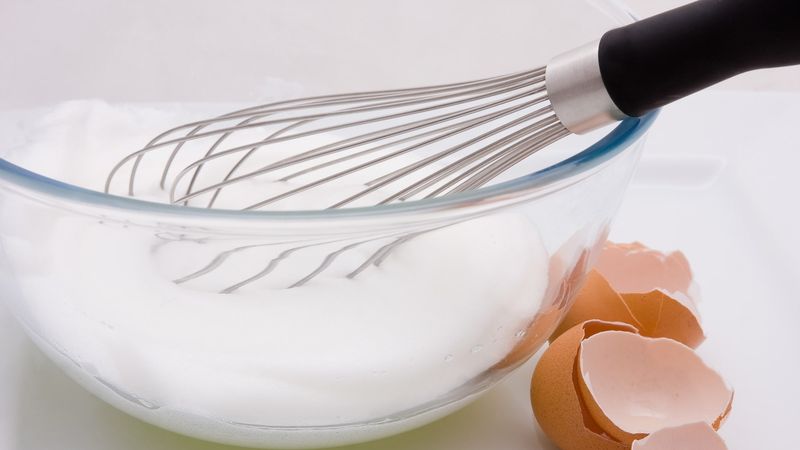
Those sad, flat scrambled eggs with strange white streaks? That’s the result of halfhearted whisking. Proper whisking isn’t just mixing – it’s introducing air while evenly distributing yolks and whites.
Use a fork or whisk with vigor for at least 30 seconds until the mixture looks uniform and slightly frothy. The tiny air bubbles you’re creating will expand when heated, giving your eggs that coveted fluffy texture.
For extra-luxurious results, try whisking in a circular motion while tilting the bowl. This technique, borrowed from French chefs, incorporates maximum air for cloud-like eggs.
6. Forgetting to Season Properly
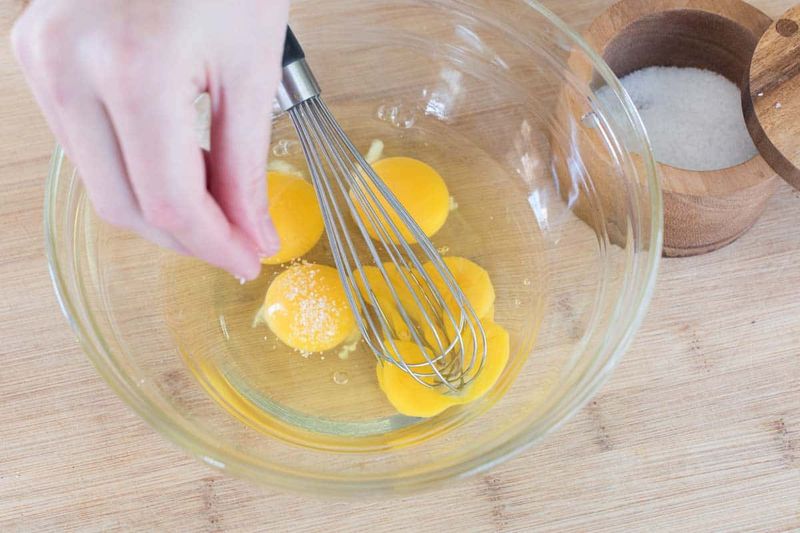
Plain eggs can taste disappointingly flat – they’re literally begging for salt! But timing matters too. Adding salt while beating the eggs helps proteins break down slightly, resulting in more tender curds.
Don’t be stingy – eggs need more seasoning than you might think. A generous pinch of salt per two eggs makes all the difference. Black pepper, herbs, or a dash of hot sauce can elevate your egg game even further.
Pro tip: For scrambled eggs, try a tiny sprinkle of sugar along with salt. It won’t taste sweet but enhances the eggs’ natural flavor while promoting beautiful browning.
7. Cracking Open Cold Eggs
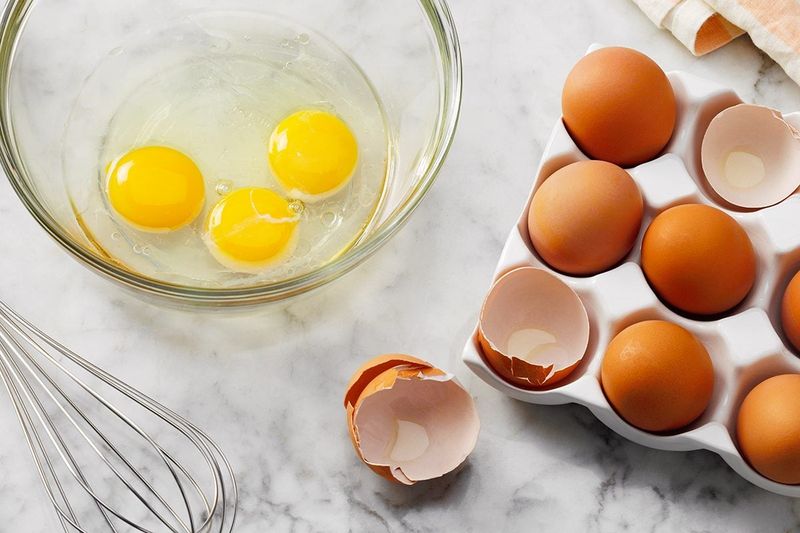
Straight-from-the-fridge eggs are a recipe for disappointment. Cold egg whites cook differently than cold yolks, leading to inconsistent results and tough texture. Cold eggs also tend to spread out in the pan rather than staying compact.
Take eggs out 30 minutes before cooking whenever possible. In a rush? Place them in a bowl of warm (not hot) water for 5 minutes. Room temperature eggs cook more evenly and produce fluffier results.
The difference is especially noticeable in baking, where cold eggs can prevent batters from emulsifying properly and reduce volume in cakes and meringues.
8. Poaching with Old Eggs
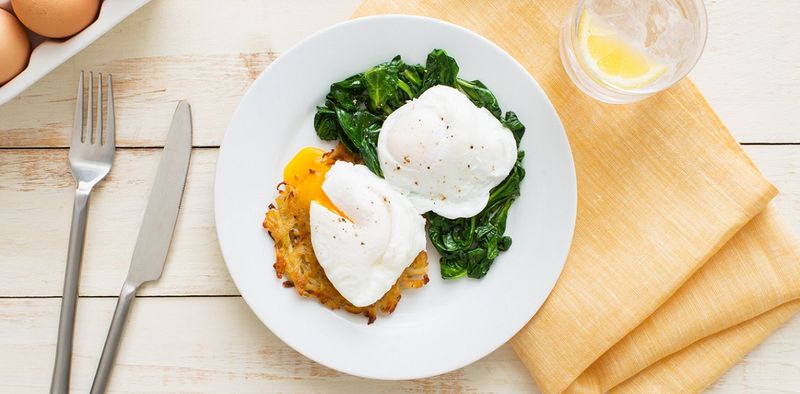
Those sad, wispy tendrils spreading through your poaching water aren’t your fault – they’re your eggs showing their age! Fresh eggs have thicker whites that hold together beautifully in water.
As eggs age, the proteins in the whites break down and become thinner. For picture-perfect poached eggs, use the freshest eggs possible – ideally less than a week old. Not sure about freshness? Try the float test: fresh eggs sink and lie horizontally in water.
No fresh eggs? Add a splash of vinegar to your poaching water. The acid helps proteins coagulate faster, giving even older eggs a fighting chance at poaching properly.
9. Dropping Eggs into Boiling Water
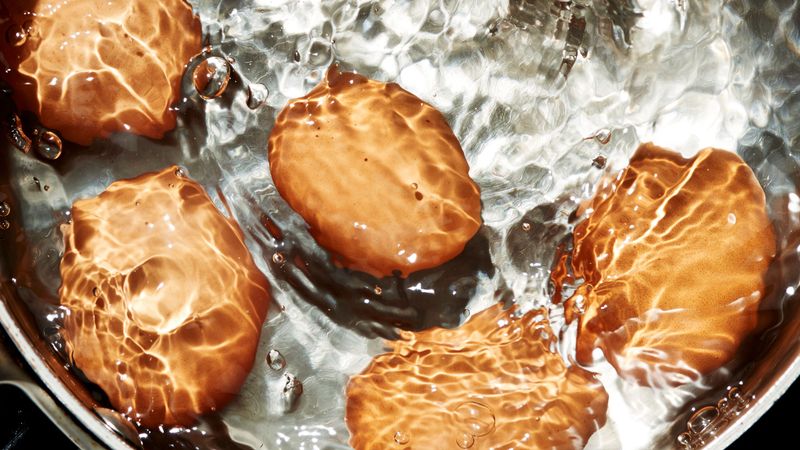
The violent bubbling of boiling water is a shock treatment for delicate eggshells. Plunging eggs directly into the rolling boil often leads to cracked shells and egg white explosions – not exactly the perfect hard-boiled egg you were hoping for!
Start eggs in cold water, then bring to a gentle boil. This gradual temperature change allows the air inside the egg to escape slowly through the porous shell instead of expanding rapidly and cracking it.
For extra insurance against cracks, add a teaspoon of salt or vinegar to your water before heating. These additives help proteins coagulate quickly if any egg white leaks out.
10. Peeling Eggs While They’re Hot
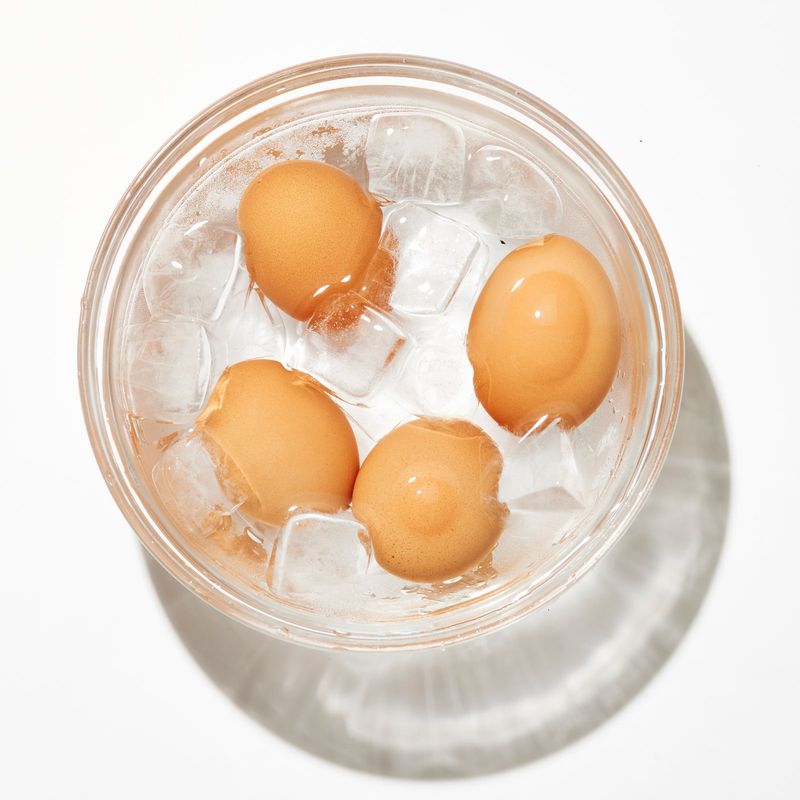
The frustration of shredded egg whites sticking to shells can ruin your perfectly boiled eggs. The culprit? Peeling too soon! Hot eggs haven’t formed the crucial air pocket between shell and white that makes peeling easy.
After boiling, transfer eggs immediately to an ice bath for at least 5 minutes. This rapid cooling not only stops the cooking process but also causes the egg to contract slightly inside the shell. Start peeling from the wider end where the air pocket forms.
Still struggling? Try the spoon hack: crack the shell all over, then slide a teaspoon between shell and egg to gently separate them in one smooth motion.
11. Skimping on Cooking Fat
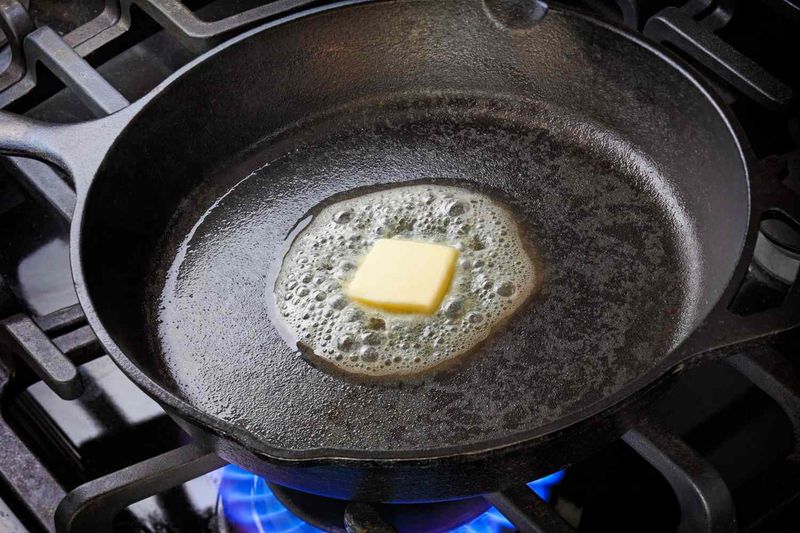
That heartbreaking moment when half your beautiful fried egg stays stuck to the pan? You probably didn’t use enough fat. Eggs are sticky by nature – their proteins bond aggressively with cooking surfaces.
Don’t be shy with butter or oil – you need enough to create a thin, complete layer on your pan’s surface. For two eggs, use at least a tablespoon of fat. Tilting the pan to coat it entirely before adding eggs prevents bare spots where sticking occurs.
Bonus tip: For extra-luxurious scrambled eggs, try adding a small pat of cold butter right at the end of cooking. This stops the cooking process while adding silky richness.
12. Cracking Eggs on the Bowl Edge
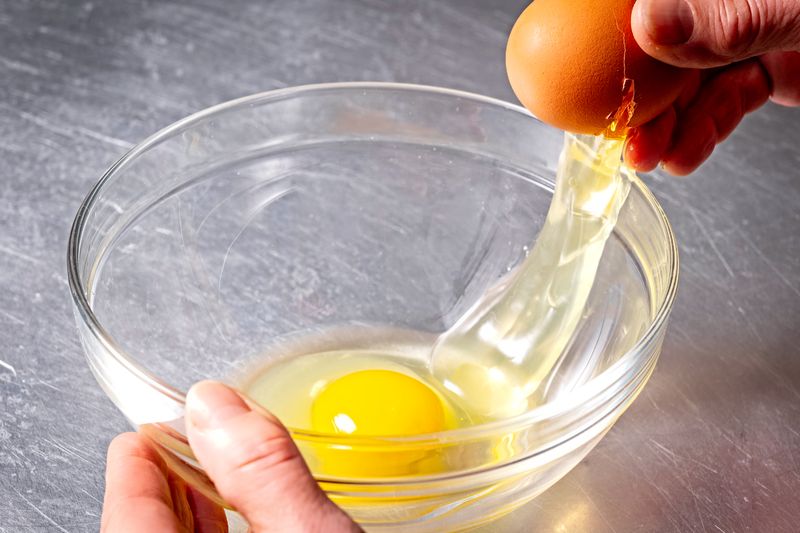
Movies make it look so professional – whack an egg on the bowl rim and presto! But that sharp edge actually pushes shell fragments into your egg, creating a frustrating shell-fishing expedition nobody enjoys.
Instead, tap eggs gently on a flat surface like your countertop. This creates a cleaner break without driving shards inward. Then use your thumbs to open the crack, keeping the shell halves facing upward to prevent drips.
Still got shell bits in your bowl? Use a larger piece of shell to scoop them out – egg shells naturally attract each other due to their membrane’s properties, making this method surprisingly effective.
Leave a comment